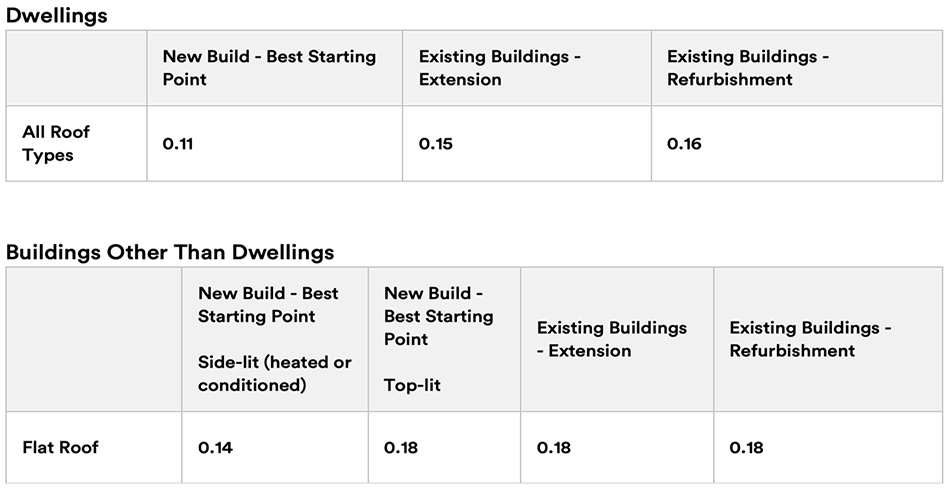On 15th June 2022, changes to Part L of the Building Regulations and subsequent changes to Approved Document L came into force in England and Wales. The changes were implemented as part of the Government’s move towards their target of Zero Carbon Ready Homes by 2025. Read on to discover what the changes are and how they affect flat roofing.
1. How have the Part L Documents changed?
The changes include cutting carbon for all new homes by 31% and for 27% for other buildings, relative to the 2013 standards.
Before the beginning of 2022 the UK building regulations for thermal performance of buildings was split into 2 documents and 4 parts:·
- PartL1A – New Build dwellings
- PartL1B – Existing dwellings
- Part L2A – New non-dwellings
- PartL2B – Existing non-dwellings
Now, the new documents have been slimmed down and merged into 2 documents:
- L (volume 1) – Dwellings
- (volume 2) – Buildings other than dwellings
2. Have required U-Values changed?
The changes also include an overhaul of the required U-Values that must be achieved, in all types of buildings. New minimum efficiency standards in England for both new and replacement thermal elements are now live, as set out below:

3. How is roof insulation affected?
There are implications to be of aware due to the uplift in U-Value requirements on flat roofs.
The better the U-Value required, the thicker the insulation needed to achieve it. For instance, with PIR insulation (polyisocyanurate) commonly used in flat roof build-ups, it would typically require 130mm thick insulation to achieve 0.18W/m²K U-Value. To achieve a better U-Value of 0.15W/m²K, 150mm thick insulation would be required.
Thicker insulation can cause upstand height restrictions, particularly on refurbishment projects, where it may not be possible to raise window and door cills.
The increased insulation depth will also result in more weight resting on the roof structure. Less problematic with lighter insulation, such as PIR, but a potentially significant problem if the roof has a requirement for non-combustible stone wool insulation. Stone wool insulation is heavier than other types of insulation, compounded by the fact that an even greater increase in insulation depth is likely due to the lower lambda value of stone wool versus some other types of insulation.
An example of this is as follows:
- PIR will typically take 130mm thick insulation to achieve 0.18W/m²K u-Value
- Stone mineral wool will typically take 190mm to achieve 0.18W/m²K u-Value
4. What about thermal bridging?
Thermal bridging, or ‘cold bridging’ must be avoided to prevent heat loss through the building’s fabric. To achieve this, it is vital that the insulation continuously wraps the entire building, whether that be the floor, the walls or the roof.
In new and existing buildings both of the following should apply:
- The insulation should be reasonably continuous across newly built elements.
- Thermal bridging, including at the party wall, should be reasonably limited.
To avoid air movement within thermal elements in new and existing buildings, the insulation layer should abut the air/vapour barrier at all points across newly built elements.
5. What is the Primary Energy metric?
A new metric for measuring the energy efficiency of new homes called the Primary Energy metric has been announced. This specifies the maximum primary energy use for a dwelling in a year, expressed as kWhPE/(m²·year). The calculation of Primary Energy considers multiple factors, such as the efficiency of a building’s heating system and the amount of energy used to produce fuel and supply it to a building. The metric is being proposed as the main calculation for assessing whether a building is achieving the Regulations set out in Part L. The Primary Energy metric is currently under review by the Government following many respondents to the public consultation disagreeing that this should be the main performance metric.
Contact Us to Discuss Your Flat Roof Requirements
Don’t waste your energy. Find out more about the latest changes to Part L building regulations by contacting us today. Email us, call us or download our latest roofing brochure or learn more about our range of flat roofing systems.




